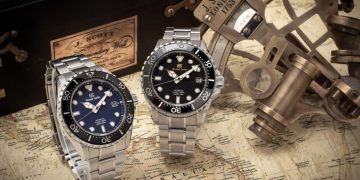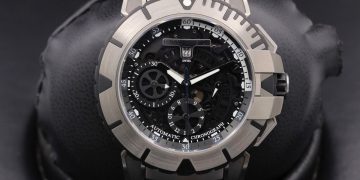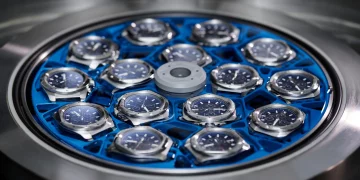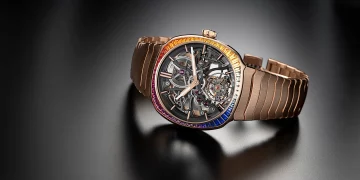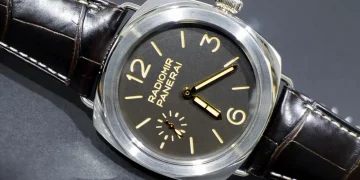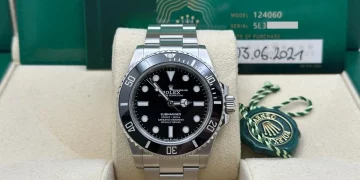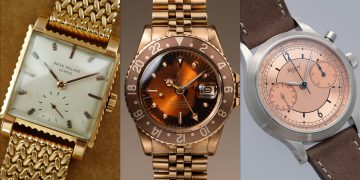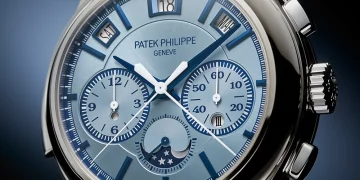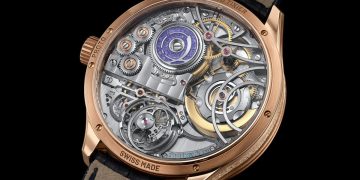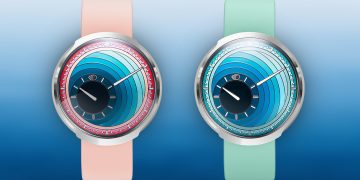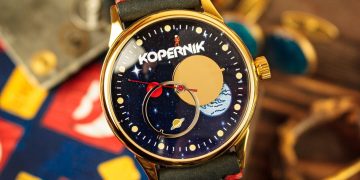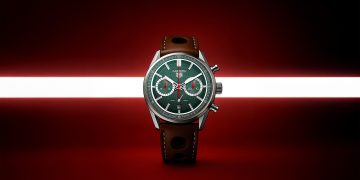Introduction
The world of watchmaking is a harmonious blend of art, science, and engineering. For centuries, the precision of a timepiece has been a symbol of human ingenuity and dedication to perfection. While traditional watchmaking craftsmanship has remained largely unchanged for hundreds of years, modern technology has introduced new materials, tools, and innovations that have significantly improved the performance, durability, and functionality of timepieces.
This article explores the intricate relationship between traditional craftsmanship and modern technology in the watchmaking industry. By examining the contributions of both aspects to the creation of precision watches, we can better understand how these two seemingly distinct forces come together to produce timepieces that embody the perfect balance of tradition and innovation.
1. Traditional Craftsmanship: The Heart of Watchmaking
1.1 The Legacy of Watchmaking: A Deep Tradition
The tradition of watchmaking is rooted in centuries of meticulous craftsmanship, passed down through generations of skilled artisans. From the earliest pocket watches to today’s ultra-complex timepieces, the foundations of horology are built on handcrafting techniques that are still in use today.
- Historical Context: The birth of mechanical watchmaking in the 16th century, with the rise of Swiss craftsmanship, laid the groundwork for the luxury watch industry we know today.
1.2 The Watchmaker’s Art: Precision and Attention to Detail
Traditional watchmakers work with intricate movements and components that demand a high level of skill and patience. This section discusses the role of hand-finishing in creating precision watches. Techniques like hand-polishing, engraving, and assembling tiny components are fundamental to ensuring the functionality and aesthetic beauty of the timepiece.
- Example: The art of hand-finishing movements in high-end Swiss watches such as Patek Philippe and Vacheron Constantin, where each component is meticulously finished by artisans to achieve perfection.
1.3 The Importance of Mechanical Movements
At the heart of traditional watchmaking is the mechanical movement—an intricate system of gears, springs, and escapements working in harmony. These movements are often assembled by hand, with extreme precision, to ensure the accurate measurement of time.
- Example: The Patek Philippe Caliber 89, a hand-wound mechanical movement that features 33 complications, is a testament to the depth of traditional craftsmanship.
2. Modern Technology: Revolutionizing the Watchmaking Industry
2.1 The Role of Modern Materials
In recent decades, modern watchmaking has introduced advanced materials like ceramics, titanium, and high-tech alloys that significantly improve a watch’s durability and resistance to wear. These materials, often developed for aerospace or medical purposes, are now being integrated into luxury watches.
- Example: The Omega Speedmaster Dark Side of the Moon, which features a ceramic case, a modern material that is highly resistant to scratches and corrosion.
2.2 Innovations in Movement Design
Modern technology has also brought advancements in the design and functionality of watch movements. With the introduction of automatic movements, quartz movements, and even smart watches, the industry has witnessed the evolution of timekeeping in various forms.
- Example: TAG Heuer’s Monaco V4, with its innovative belt-driven movement, challenges the conventional design of traditional watch movements, combining modern mechanical technology with aesthetic originality.
2.3 Precision and Accuracy: Advancements in Timekeeping
One of the most significant technological innovations in the watch industry is the increase in accuracy. Traditional mechanical watches are known for their precision, but quartz watches, with their electronic movements, have raised the bar for timekeeping accuracy.
- Example: The Grand Seiko Spring Drive, a hybrid movement that combines mechanical and electronic technologies to achieve incredibly accurate timekeeping with a smooth second-hand motion.
3. The Fusion of Traditional Craftsmanship and Modern Technology
3.1 The Synergy Between Handcrafting and Automation
Many contemporary luxury watchmakers have embraced modern technology without compromising the traditional art of handcrafting. Today’s watchmaking houses often combine automated processes for mass production with traditional hand-finishing techniques to ensure that every piece meets the highest standards.
- Example: Rolex, a leader in the industry, utilizes modern technology to manufacture high-precision components in a controlled environment but still relies on manual finishing processes to ensure the final product’s quality and aesthetic appeal.
3.2 Hybrid Movements: Blending Mechanical and Technological Innovations
Some of the most innovative watches today combine traditional mechanical craftsmanship with modern technological advancements, resulting in hybrid movements that offer both superior functionality and traditional appeal.
- Example: Jaeger-LeCoultre’s Duomètre series, which combines mechanical movements with advanced technological enhancements such as dual-wing systems to offer precise timekeeping and additional complications.
3.3 Smart Watches and Traditional Craftsmanship: A New Era of Precision
The rise of smartwatches has challenged the watchmaking industry to incorporate digital technology into traditional watchmaking. High-end brands have begun integrating smart features, such as health tracking and connectivity, into their mechanical timepieces, all while maintaining their heritage of craftsmanship.
- Example: The Tag Heuer Connected, a luxury smartwatch that combines the best of traditional watchmaking with the functionality of digital technology.

4. The Future of Watchmaking: Preserving Tradition in a Technological World
4.1 How Watchmaking Is Evolving with Digital Innovation
As the world of watchmaking continues to evolve, there are many possibilities for how modern technology will further shape the future of precision watches. With advancements in 3D printing, artificial intelligence, and even blockchain for authentication, the future holds immense potential for transforming both the design and the distribution of timepieces.
- Example: Vacheron Constantin’s Overseas Watch features advanced digital technologies for better precision and ease of use, allowing users to monitor time zones and set different complications with ease.
4.2 Sustainability: How Technology Is Shaping Eco-Friendly Watchmaking
The luxury watch industry has also seen the rise of eco-conscious materials and practices, with some manufacturers using technology to develop sustainable, high-performance materials. Additionally, the use of more efficient manufacturing processes reduces the environmental footprint of watchmaking.
- Example: Swatch Group has made strides in using renewable materials, such as bio-sourced plastics, to produce some of their watch collections, ensuring sustainability in their production processes.
4.3 Preserving the Craft: How Technology Aids Traditional Watchmaking Skills
Rather than replacing traditional craftsmanship, modern technology is helping preserve it by improving the training of new watchmakers. Digital tools, simulation programs, and other technological innovations assist artisans in perfecting their skills, ensuring the continuity of these valuable techniques.
- Example: The Swiss Watchmaking Academy integrates virtual technology with traditional training, offering a hybrid approach to learning the craft and enhancing precision with modern tools.
5. Case Studies: Watches that Embody the Harmony of Tradition and Technology
5.1 The Patek Philippe Grand Complications: A Masterpiece of Precision
Patek Philippe’s Grand Complications collection combines centuries-old watchmaking techniques with cutting-edge technology, resulting in timepieces that are both mechanically complex and technologically advanced. The integration of hand-finishing with precision mechanics is what makes these timepieces stand out.
- Analysis: Discuss the design and engineering behind one of Patek Philippe’s most sophisticated models, explaining how it merges traditional and modern elements.
5.2 The Omega Seamaster Planet Ocean: From Classic to Cutting-Edge
Omega’s Seamaster Planet Ocean is an example of how modern technology, such as high-tech ceramics and magnetic-resistant movements, can elevate a traditional design. This watch is built for durability and precision while maintaining the classic aesthetics that Omega is known for.
- Analysis: Detail how Omega’s use of modern materials and manufacturing techniques enhances the watch’s performance without compromising its traditional appeal.
5.3 The Audemars Piguet Royal Oak Offshore: A Blend of Artistry and Innovation
Audemars Piguet’s Royal Oak Offshore line is known for its bold design, blending high-level craftsmanship with modern watchmaking technology. The use of modern materials like titanium and ceramic, combined with mechanical ingenuity, exemplifies how both aspects can work together to create a stunning timepiece.
- Analysis: Focus on how Audemars Piguet continues to evolve with the times, using technology to push the boundaries of design while honoring traditional craftsmanship.
Conclusion
The world of high-end watches is a testament to the fusion of traditional craftsmanship and modern technology. While mechanical movements, hand-finishing, and meticulous design continue to form the backbone of luxury timepieces, modern technological advancements are reshaping how watches are made, pushing the limits of precision, durability, and functionality. The synergy between these two forces has given rise to some of the most exceptional timepieces in history, proving that the art of watchmaking is not only about preserving tradition but also about embracing innovation to create the future of precision horology.
As we look to the future, the integration of technology with time-honored techniques promises to unlock even greater possibilities in the world of watchmaking, ensuring that the art and science of horology will continue to evolve for generations to come.


